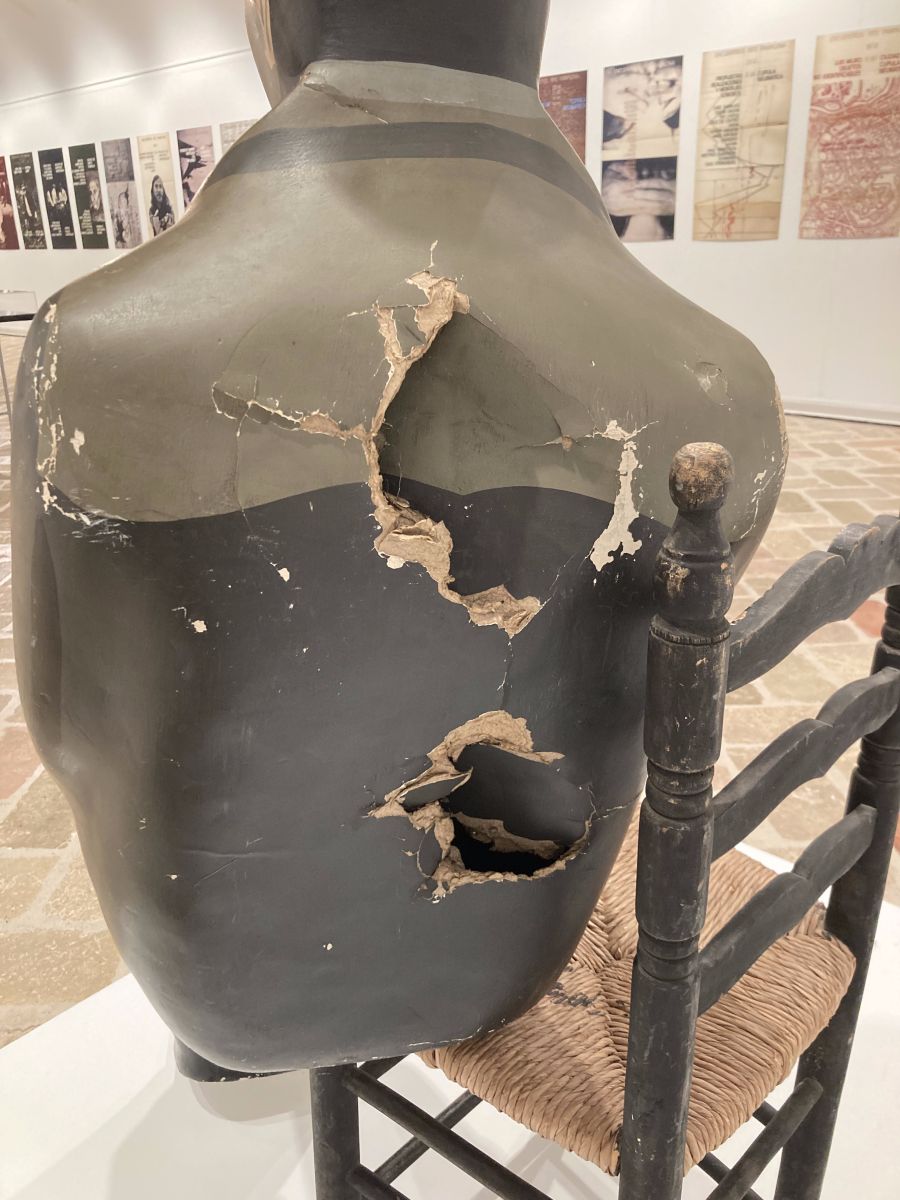

This text comes two years later, but the calamities of drunks are like this. A surprising surprise happened in San Fermín Txikito: I met Maite Ciganda Azcarate, an art restorer and friend of a friend. That night he told me that he had been arranging two figures that could be seen in the famous Pamplona Art Encounters of 1972.
During the dictatorship, the regime normally controlled all public acts, but in that case they decided not to put too many obstacles to artistic freedom. In fact, these encounters were funded by the oligarchic family Huarte. Pushing avant-garde art, they wanted to bleach; a little gray.
The incidence of these encounters is known: censorship, clashes between artists, boycotts, deteriorated works and even violent actions. ETA V.ak placed two bombs in Pamplona that week, one of them at the monument to San Jorge. But he did not know what happened with the work of the Valencian collective Equipo Chronicano. Rafael Solbes and Manuel Valdés made about 100 stone cardboard figures that represent, in natural size, secret police of the Social Policy Brigade with gray gabardines, dark glasses and fascist-style mustaches. These figures were placed in various events and happenings to denounce the false freedom monitored and repression in the meetings. They gave him the title of spectator viewer, that is, spectator spectators.


And then spontaneous performance started. In a concert on the Labrit fronton, the spectators started playing with the dolls: from there they moved, deteriorated, broke and robed. Only a few of these figures were saved. Some ended up in private homes and others didn't know where. Some specimens are scattered here and there: The Reina Sofía Museum of Madrid, the Museum of Fine Arts of Bilbao, in the hands of the Government of Navarra… Two years ago, on the occasion of the anniversary of the meetings, the City of Pamplona recovered two other figures, one acquired from a private individual and the other on loan. Ciganda was in charge of its restoration. The fact is that in his restoration he did not erase all the footprints left by the blows. These traces are a reflection of the social environment of the time. The footprints of these blows are also patrimony and therefore part of the same work. Then it was said “Repressive bodies, dissolution!”; and today 1312 or M.G.G.D.P.

Epilogue: Six months after the meetings, in January 1973, a strike took place at the Torfinasa factory, owned by Huarte. On that strike, ETA V.ak intervened again. To force him to comply with the demands of the workers, he kidnapped Don Felipe Huarte. The parties and institutions of the workers’ movement (CCOO, ORT, MCE, LCR-Y VI, …) criticised ETA’s intervention by saying that individualistic violence and the small bourgeoisie could not replace the mass struggle of the organized proletariat. The Huartans signed the workers' requests, and once the rescue was paid, the businessman was released unconditionally. But in the years that followed, they didn't have the time to sponsor the avant-garde arts, and the artistic encounters didn't happen again.